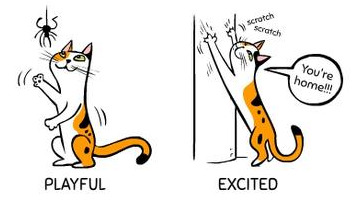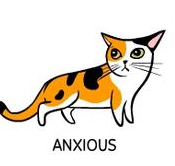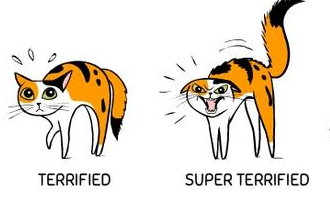How to read your cats body language
Date Posted:6 August 2019

Cats are amazing creatures, with so much to give to you and your family. If you are not used to cats or have just gotten a cat you may not understand their body language. Body language is important to understand so that you can make your cat feel their best at all times. Here are some clues to help you understand what your cat is feeling.
|
Interested When your cat is interested in somthing they may move their head to the side and have their tail slightly downwards. |
 .PNG) |
|
Friendly When a cat is feeling friendly they will walk with their tail in the air, may make eye contact with you or even approach you! |
 |
|
Relaxed When a cat is feeling relaxed they can be laying down, maybe even sprawled out a bit. They will purr and may close their eyes. Slow blinks can also be a sign of relaxation in cats, they can do this sitting down aswell. |
 |
|
Playful/Excited When your cat is feeling playful or excited it is not such a hard one to pick up. Playful behaviour is a sign of a happy cat. They may play with toys or scratch on somthing. |
 |
|
Rubbing on things When cats rub their head on things it is a sign of them transferring their scent. This behaviour is usually them making sure they have your full attention and can be a sign of affection from your cat. |
 |
|
Anxious When a cat is feeling anxious they tend to walk closer to the ground with their tail down. They will look around and may scurry. Their eyes will be wide open and they will not blink alot. If they are feeling like this they will often try and find a safe place to hide. |
 |
|
Predatory Cats have a natural predatory instinct that can come out from time to time. This may be when they are playing or hunting somthing. They are usually low to the ground and very still, usually preparing to pounce. |
 |
|
Irratated An easy sign to spot when your cat is feeling irratated is a swishy tail. They may do this when somthing is bothering them. |
 |
|
Terrified This one is a pretty easy sign to pick up. When your cat is terrified they may run away or show aggression such as hissing, biting, scratching etc. Common fear triggers may be things like a loud noise or quick movement, a strange environment, a new person or animal or a generally stressful event to them. |
 |









